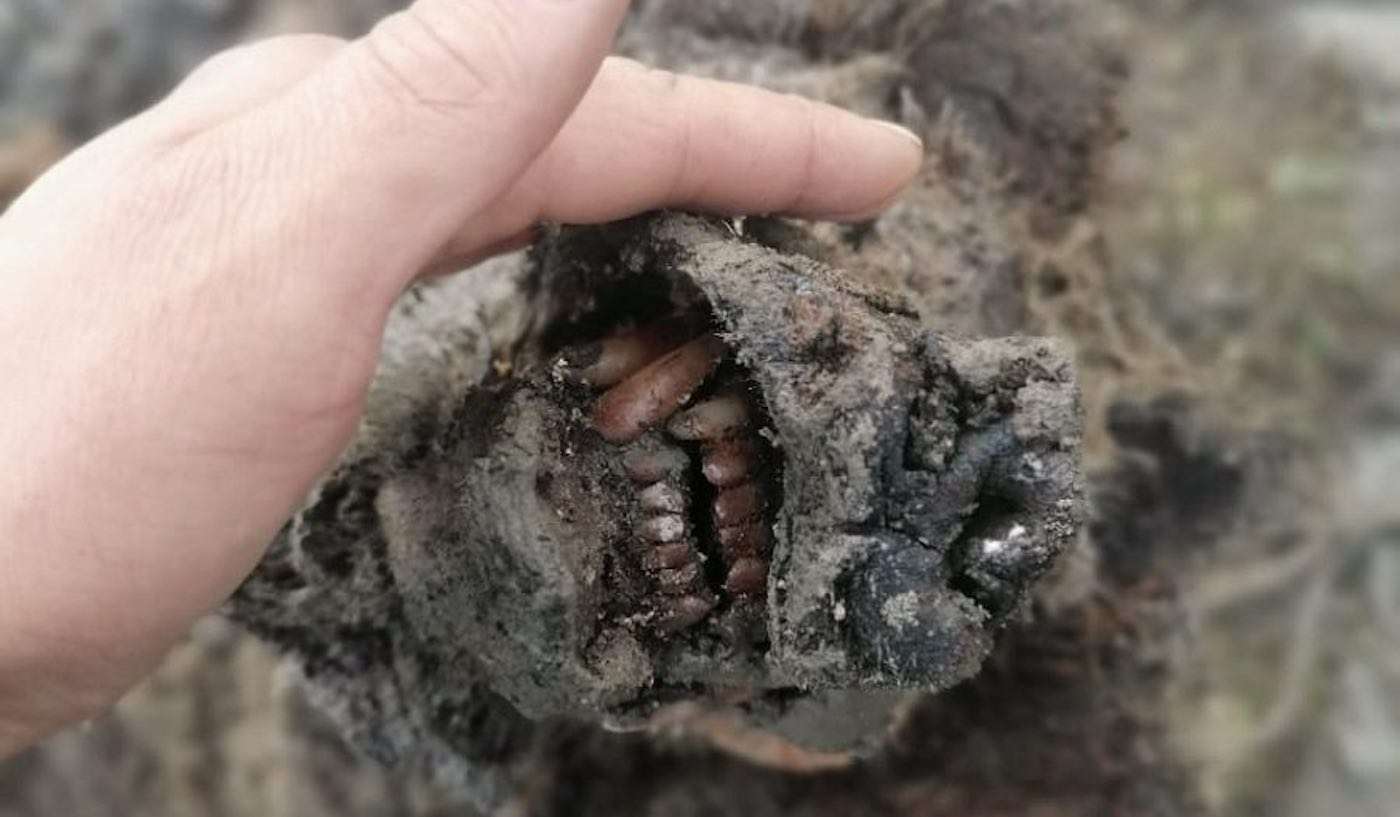Paleontologists Uncover Rarer-than-Rare Fossil of Oviraptor on Nest of Eggs With 24 Embryos Inside
In China, an oviraptor fossil was discovered incubating a clutch of 24 eggs, all of which containing embryos, in once-in-a-lifetime find.

In a first-of-its-kind discovery, reindeer herders in the frozen tundra of the Russian Arctic find the "mummified" remains of an Ice Age cave bear.
Discovered on Bolshoy Lyakhovsky island in the Siberian Republic of Sakha, the bear was found encased in ice so that all its organs—even its nose—were still intact, allowing scientists the rare opportunity to study the extinct animal in exquisite detail.
Radiocarbon dating to discover the age of the remains has not been completed, but early suggestions seem to suggest they are around 39,000 years old.
Scientists at the North-Eastern Federal University in Yakutsk, Russia, who are giddy over the discovery, said that, until now, only skulls and bones of the cave bear—a slightly-larger predecessor to the modern brown bear—have been found.
"Today this is the first and only find of its kind—a whole bear carcass with soft tissues. This find is of great importance for the whole world," said the university's Lena Grigorieva, one of Russia's leading experts in Ice Age species.
Another scientist, Maxim Cheprasov from the Mammoth Museum laboratory in Yakutsk, told the Siberian Times that "a scientific program for its comprehensive study will be prepared," so that more is known about how the animal lived.
"We will have to study the carcass of a bear using all modern scientific research methods—molecular genetic, cellular, microbiological and others."
Coincidentally, a well-preserved cave bear cub of the same species (Ursus spelaeus) was recently found separately.
One of the classic examples, like the woolly mammoth, from the Late Pleistocene era's megafauna, the cave bear originally got its name because most of its bones were found in caves.
POPULAR: Newly-Discovered Canadian Cave Big Enough to Fit the Statue of Liberty Proves the World is Still a Wondrous Place
Having no natural predators, scientists have long hypothesized that death during hibernation, a period which during the last Ice Age would have been long indeed, was the most common cause of mortality.
Climate change, and human-caused extinction have both been suggested as the major cause of the animals disappearance as recently as 15,000 years ago.
Permafrost melts in Siberia, according to the Times, have revealed major discoveries in the field of paleontology, such as the preserved carcasses of mammoths, woolly rhinos, Ice Age foals, and cave lions.
UNEARTH This Awesome Discovery For Your Friends On Social Media…
Be the first to comment